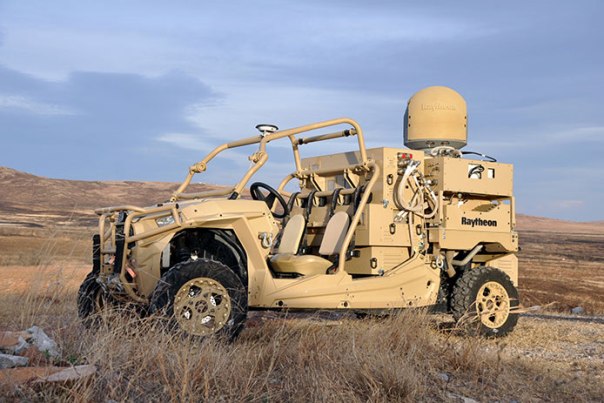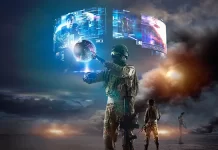C-UAS Race Requires Collusive Support
Undoubtedly, countries are investing large sums for R&D and procurement of the unmanned combat aerial systems (UCAS). The US Air Force received the prototype of the vehicle-mounted C-UAS – High-Energy Laser Weapon System (HELWS) in 2019. As per the Congressional Research Service paper of Jan 2021, the US Army as well as the US Navy, is working on the development of computer-enabled C-UAS products in collaboration with the Defense Digital Service. As per the Navy Technology news of 17 Mar 21, the US Navy is set to deploy the Optical Dazzling Interdictor, (ODIN) and the High Energy Laser with Integrated Optical-dazzler and Surveillance (HELIOS) in 2021. It took the delivery of HELIOS from Lockheed Martin for testing in January 2021. Lockheed Martin is also developing a 60kW laser weapon system combining multiple fiber lasers to counter drone attacks. Further, ICARUS system, a cyber solution to combat small drone threats, has also been developed.
The race to the swift has nations vying for leveraging the 5G spectrum, since the space to render effective counters to the UAS will vacillate across the electro-magnetic spectrum, utilizing both passive and offensive measures. The range includes radar systems, microwave weapons, jammers, directed energy weapons, swarms riding artificial intelligence and autonomous systems. The cocktail is indeed a heady mix, but it also reflects the lethal operating milieu that militaries will need to contend with in not too distant a future.
Transformational Technologies
Presently, the established means to neutralize UAS is by resorting to physical downing means. Millimeter wave (mmW) radar along with data fusion methods are considered promising trends in the future. Due to the low footprint and low collateral damage, Hacking and Spoofing have emerged as a promising negation solutions, though a package to develop mature scalable, modular and affordable solution is a while away.
AI and ML in the domain of C-UAS assists the human operator in the loop to overcome complexities of sheer volume and speed of an impending attack. The process combines data from multiple sensors and fuses output to be used collaboratively with available data. The database to train the algorithms for ML is extrapolated from existing radars. The decision matrix loop of an incoming attack is in seconds for the operator to detect, mitigate and neutralize the UAS. The dilemma lies in the threat assessment, which is eased by AI that helps improve quality and speed of decision-making.
To optimize the process from Detection to Strike, use of ‘Quantum Computing’ (QC) is also being envisaged. Though the concept is the nascent stage, as the method to leverage these ‘surge technologies’ by factoring life cycles and operationalizing paradigms is still being worked out. QC is considered ideal for detection of patterns and conjuring digital signatures.
What needs to be understood is that AI and ML is good to optimize processes (by training on the datasets to track/recognize the drones) and is ideal for detection; however, for initiating the Strike, the operator in the loop is mandated. This is to guard against cyber threat of a malware being introduced into the system that would generate algorithms, turning the weapon rogue. The scientific community is working on the intrigue of trying to ‘Program Common Sense’, as it were. The approach being adopted by countries on the throes of developing Counter-UAS technologies using AI and ML are:-
• Focusing on the ability to democratize data and use it to generate intelligence.
• Enhance decision making by assisting human operator in the extremely short time critical window.
• Develop infrastructure at the ‘Edge’ to transform data collected into intelligence/ insight.
The ultimate aim of the C-UAS philosophy is the safe integration of the UAS into the airspace. Methods of detection and mitigation overlap and are often combined to provide a more effective and layered capability.
Policy Basket
Whilst, technological advances in AI, QC and Robotics are transformative, they also pose considerable threats and risks regards ethics, privacy, security and sovereignty, that countries developing these technologies require factoring.
The policies for export of weapons-grade technology followed by China and Russia are fairly accommodative when compared to the control regimes that the US has bound itself by. The Conventional Arms Transfer (CAT) Policy, revised in 2018 aims to preserve U.S. national security, its economic security, strengthen strategic U.S. allies, and perpetuate the U.S. military’s technological edge in line with its other international trade policies. The International Missile Technology Control Regime (MTCR) to which Washington voluntarily adheres, provides a framework of understanding amongst states aimed at limiting the proliferation of missile technology with payload and range of the rockets and UAVs of at least 500 kgs and 300 kms, respectively.
Turkey joined the MTCR in 1997 but China does not participate in the initiative. US intends to institute reforms to the International Traffic in Arms Regulations (ITAR) that would provide a level playing field and allow it to compete with countries that diluted arms export restrictions, especially with respect to drone exports. The debate in the US rages between the aspects of diluted control for equivalence in the economic security and national security and the jury is still out with the Biden administration considering its pros and cons.
India promulgated the rules for UAS titled, “Unmanned Aerial Systems Rules-2021” on 12 Mar 2021. The rules list out the category of UAS and modalities for permits and licence applications and penalties for non-compliance. The civil aviation ministry has also promulgated the UAS National Traffic Management Policy spelling out the architecture, concept of operations and deployment plan for enabling UAS Traffic Management (UTM) ecosystem in India.
Doctrinal Precepts
India and the US have signed four significant foundational agreements reinforcing military cooperation. Progress made by the US in the UCAS domain will assist India leverage the development at some stage. According to Janes, India is the world’s third largest armed force and third largest defence spender after US and China. In the midst of a large military modernization drive, with the indigenous defence industrial bases having been put into motion with a corridor each in the Indian states of UP and Tamil Nadu, the Defence Acquisition Procedure-2020 classifies Capital Procurement under a new category – “Buy (Global – Manufacture in India)” – with minimum 50 per cent indigenous content. The UCAS from any of the Indian allies may be routed through this category.
The air and ground radar package must include low power, low signature KU-band radars, networked by AI compute, made resilient through redundancy, looking at all angles, capable of simultaneous detection and tracking multiple threats (essentially a guard against swarms). The inclusion of directional radio frequency inhibitor in the process would mitigate the UAS by instituting loss of control thereby denying, deterring or disrupting an impending threat. If the electronic counter-attack is insufficient, the kinetic hard-kill option still exists due to the layered approach across the full kill-chain.
Own vulnerabilities must be assessed, factoring AI and ML. A 360-degree cardinal situational awareness, layered with sophisticated AI facilitated techniques to deduce swarm objectives and threat mitigation needs to be propagated. International cyber attacks either through nations or through organizations, leveraging the power of AI can have catastrophic impact on society. Juxtapose this with lethal autonomous weapons and the problems get accentuated.
UCAS is not a silver bullet but a natural corollary to the evolution of UAS continuum. Nagorono-Karabakh was the real conflict experience for the U-CAV. At different levels of operation, the integration levels preferred are:
• At the technical level, there is a requirement of multi-domain solutions.
• At the tactical level, there is greater requirement of integration to develop a common operational picture to avoid fratricide.
• At the operational level, there is requirement of a seamless integration of the UCAS with existing capabilities.
• At the Strategic level, there is a requirement of whole of the government approach. The entire gamut of actions from Prevention (that stresses on the EW signals to Intelligence) to Situational Awareness (that legislates detection, tracking, classification and identification) to Response (by defeating, deterring, destruction or capturing) and to the post event analytics (or PSDA); the entire flow chart of activities is constructed and these precepts incorporated in the CUAS operational strategy.
The Chief of Defence Staff, Gen Bipin Rawat, during a webinar on ‘Shaping the Armed Forces to meet likely current and future challenges’ at the Vivekananda International Foundation, New Delhi, on 7 April, spelt out the emerging paradigm to be adopted by India and he stated, “Future battles requires us to confront the growing capabilities of our adversaries, i.e., the hybrid imprint, collusive support and threat posed from emerging technologies. Needless to say, we cannot fight the next war premised on the experiences and structures of the past wars. The keystone to the way forward is by joint-ness, integration and modernization by imbibing technology in line with the changing security environment and utmost optimization of resources generating greater combat effectiveness”.
Out of the world glare, India has donned the ‘Green (creativity) Hat’ from De Bono’s Six Thinking Hats to try new ideas and perspectives – something vital for assuming leadership in the global context. Hindustan Aeronautics Limited (HAL), as part of it next generation Combat Air Teaming System (CATS) has unveiled the Air Launched Flexible Asset (ALFA-S) swarming drone system to penetrate contested airspace. Remember, a swarm itself maybe used as an effective C-UAS against a swarm attack. The approach is collaborative with the USAF’s ‘Air Force Research Labs’ joining the bandwagon with India.
A layered approach with integration of different systems is ideally suited for the Indian approach. Since C-UAS needs to be factored into the air defence philosophy at the Service level, the announcement of an Air Defence Command, as part of the overall theaterization, synergizing all resources under direction of a single theater commander augurs well for the concept. The system must be capable of detecting – tracking -identifying – deterring and ultimately defeating an incoming attack. The strategy must be based on an ‘autonomous’ model with fused systems, capable of more than one vector response, used proactively. It is a concept that needs incorporation sooner than later. (Concluded)













